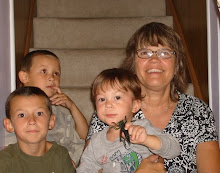This year I am beginning the year with a positive inquiry for the parents. They are often eager to tell me about their child's problems. I would like to begin with their strengths. I hope this is an effective tool. I will keep you posted. :-) Here are the questions I am using.
Tell Me About Your Child
This information will help me design activities that will
match your child’s interests and our first grade curriculum.
1. What did your child like most about kindergarten?
2. Tell me something your child does well.
3. What does your child enjoy doing during their free time?
4. What are two of your child’s favorite books?
5. What is your child’s favorite game?
6. Does your child have any hobbies or collections?
What are they?
7. What are some things that you would like me to know about your child?

